1. Overview
Reginald Heber (21 April 1783 - 3 April 1826) was a prominent English Anglican bishop, a man of letters, and a prolific hymn-writer. He spent 16 years as a country parson before being appointed Bishop of Calcutta, a demanding role he held until his death at the age of 42. Heber gained early recognition as a poet at the University of Oxford, notably winning the Newdigate Prize for his poem "Palestine." Following his graduation, he undertook an extensive tour through Scandinavia, Russia, and Central Europe, broadening his perspectives on diverse cultures and societies.
Ordained in 1807, Heber succeeded his father as rector of Hodnet, Shropshire. During his pastoral career, he combined his clerical duties with significant literary pursuits, including a critical study of the 17th-century cleric Jeremy Taylor and the composition of numerous hymns. His hymns, characterized by their poetic imagery and theological depth, became widely influential, with "Holy, Holy, Holy! Lord God Almighty" remaining a popular hymn for Trinity Sunday and "Brightest and Best" frequently sung during Epiphany. However, his missionary hymn "From Greenland's Icy Mountains" later drew criticism for its colonial undertones and perceived insensitivity towards other beliefs.
Consecrated Bishop of Calcutta in October 1823, Heber embarked on a mission to British India, where he traveled extensively across his vast diocese, including Ceylon, Australia, and parts of southern Africa. He dedicated himself to improving the spiritual and general living conditions of his flock, working to enhance church infrastructure and ordain local clergy. His arduous duties, combined with the challenging climate and his declining health, led to his untimely death after less than three years in India. Memorials were erected in his honor both in India and at St Paul's Cathedral in London, commemorating his significant contributions to the Anglican Church, English literature, and church music.
2. Life
Reginald Heber's life was marked by a rich family heritage, a distinguished education, and extensive travels that shaped his intellectual and spiritual development before his dedicated service to the Church.
2.1. Background and Childhood
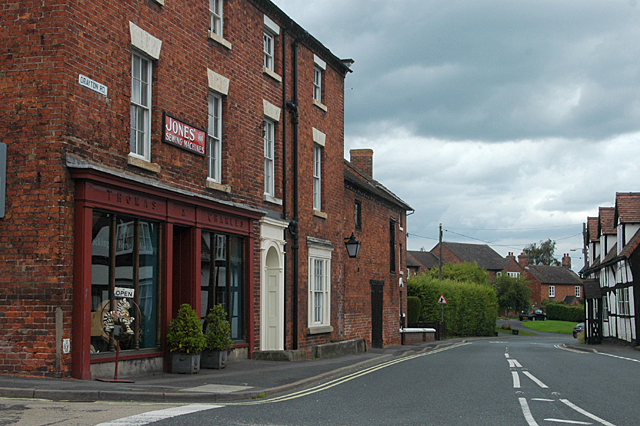
The surname "Heber" is believed to originate from "Haybergh," a hill in the Craven district of Yorkshire, where the family's roots lie. The Hebers held the lordship of the manor of Marton and were granted a coat of arms during the reign of Queen Elizabeth I. Richard Heber, Reginald's father, was the son of Thomas Heber and Elizabeth Atherton, the latter being the granddaughter of Richard Atherton.
In 1752, Richard Heber inherited the manor and estate of Hodnet Hall in Shropshire from a cousin of his wife. This inheritance included the patronage of the Hodnet parish. Upon Richard Heber's death in 1766, his brother Reginald, who was then co-rector of the parish of Malpas in Cheshire, inherited the Shropshire estate and also became the rector of Hodnet. Reginald Senior's first marriage to Mary Baylie produced a son, Richard Heber, who later became a renowned book collector and a Member of Parliament for Oxford University. Following Mary Baylie's death, Reginald Senior married Mary Allanson, and their elder son, born at Malpas on 21 April 1783, was named Reginald after his father.
At the age of eight, the younger Reginald began five years of schooling at the local grammar school in Whitchurch. In 1796, he was sent to Bristow's, a small private school in Neasden, a few miles north of Central London. This school provided intensive education for about a dozen boys, preparing them for entry into Oxford or Cambridge. At Bristow's, Heber formed a lifelong friendship with John Thornton, with whom he shared a deep interest in church history and beliefs. A lengthy letter from Heber to Thornton from this period was later described by Heber's biographer Arthur Montefiore as being worthy of a learned theologian. In October 1800, Heber matriculated at Brasenose College, Oxford, a decision that caused him to regret Thornton's choice to attend Cambridge.
2.2. Education
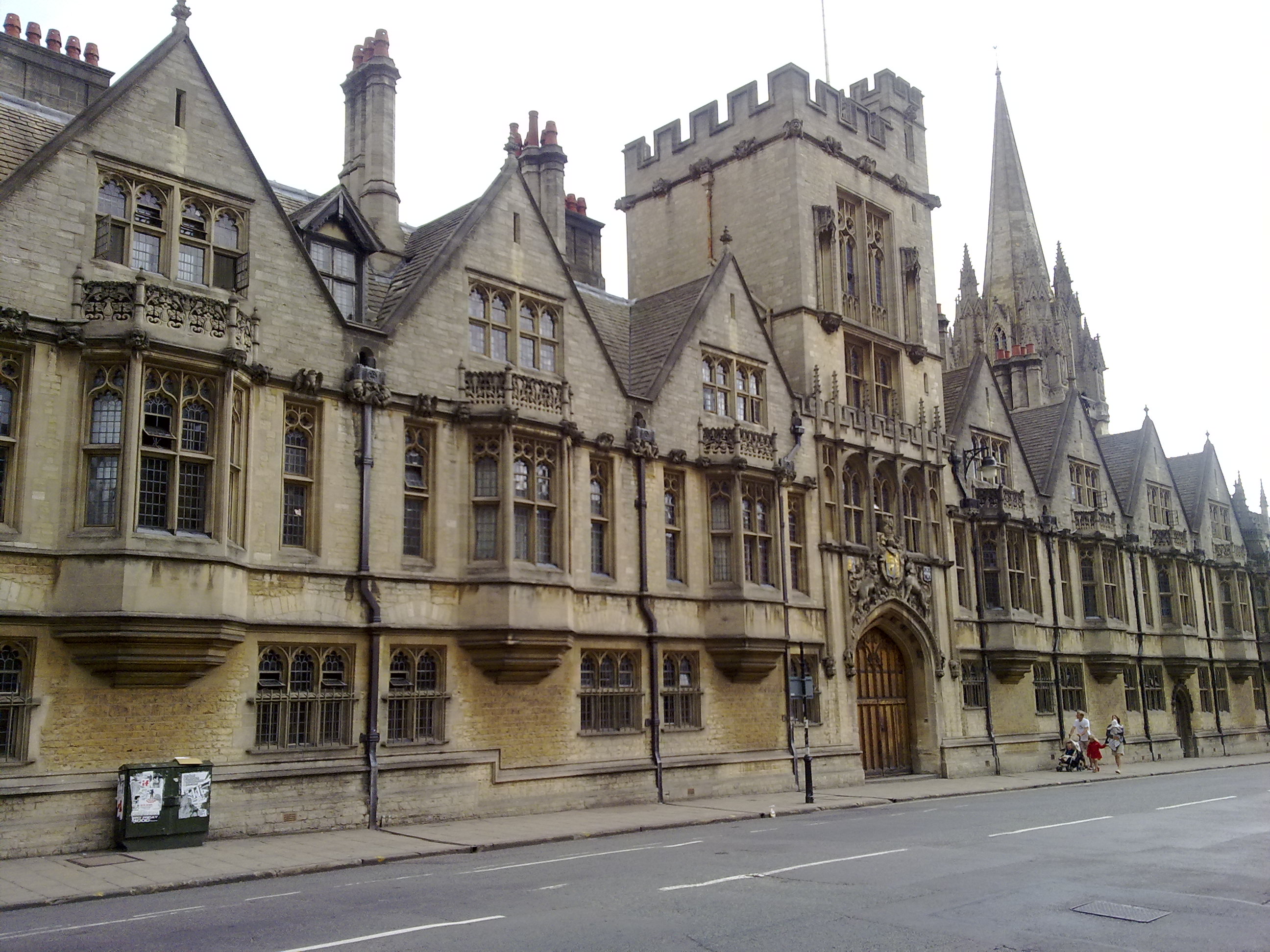
Reginald Heber's family had strong ties to Brasenose College; his brother Richard was a fellow there at the time, and his father was a former fellow. The college head, William Cleaver, was a friend of Reginald Senior and a frequent visitor to Hodnet Hall. In his first year at Oxford, Heber won the University Prize for Latin Verse, quickly establishing a local reputation as a Romantic poet. In 1803, he submitted his long poem, "Palestine", for the prestigious Newdigate Prize. He had received assistance in its composition from Walter Scott, a family friend, before Scott achieved widespread fame. The poem was met with enthusiastic acclaim when Heber recited it at that year's Encaenia ceremony.
"Palestine" was subsequently published and set to music by William Crotch, who had been Oxford's professor of music since 1797. It was also translated into Welsh by W. Owen Pughe in 1822. In 1902, Montefiore described it as "the most successful and popular piece of religious verse of the first half of the [19th] century." However, Heber's later biographer, Derrick Hughes, found its contemporary praise perplexing, describing the poem as "not a good, not even a mediocre poem; it is leaden."
The death of Reginald Senior in February 1804 left the living of the parish of St Luke, Hodnet vacant, which may have influenced Heber's decision to pursue ordination, though he postponed it for several years. In his degree examinations, Heber performed honorably rather than exceptionally. Montefiore noted a contemporary view that Heber's primary contribution to university life was in areas beyond formal academic success, particularly as a thinker, poet, and orator, describing him as "a star whose lustre was as steady as it was clear." He received his bachelor's degree in the summer of 1804 and was elected to a fellowship at All Souls College, Oxford. He also won the university's Bachelor's Prize for an English prose essay.
2.3. European Journey
Following their graduation, Heber and John Thornton had initially planned a Grand Tour of Europe. However, by 1804, the Napoleonic Wars rendered much of Europe inaccessible. Consequently, they delayed their departure until the summer of 1805 and chose an alternative route through Sweden, Norway, and Finland to Russia, instead of the customary journey through France and Italy.
In July 1805, they set sail for Gothenburg in Sweden. From there, they traveled northward by stagecoach, passing through Vänern and Uddevalla, before reaching Kristiania (modern-day Oslo) in Norway. After a brief stay, they continued through the rugged Dovre Region to Trondheim, where they witnessed the practice of skiing for the first time, which Heber referred to as "skating."
They then turned southeast, re-entering Sweden and traveling through Uppsala to Stockholm. In late September, they crossed the Gulf of Bothnia to Åbo (modern-day Turku), which was then part of Swedish-ruled Finland and home to Europe's northernmost university. They proceeded eastward, arriving in St Petersburg at the end of October. They spent two months in the city, using influential contacts at the British Embassy to visit places typically closed to the public, including Tsar Alexander's private quarters within the Winter Palace. During their stay, they observed Muslim worship firsthand as the city's large Muslim population observed Ramadan. Heber described the crowds gathered for prayer in an improvised mosque as "the most decent and attentive congregation [he] had seen since leaving England."
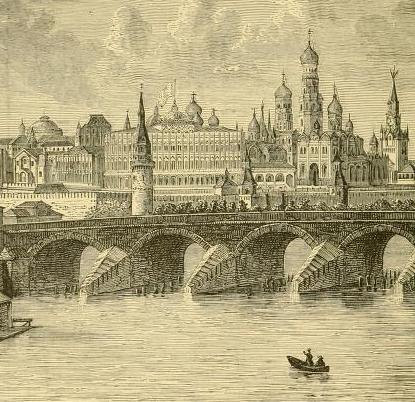
Heber and Thornton had intended to remain in St Petersburg until after the New Year and then return home through Germany. However, Napoleon's victory at the Battle of Austerlitz on 2 December 1805 and the subsequent treaties thwarted this plan. Instead, they extended their stay in Russia, departing St Petersburg on 31 December 1805 by sledge for the 500 mile journey to Moscow, where they arrived on 3 January. They found Moscow to be a hospitable city, with Heber describing it in a letter home as an "overgrown village." They befriended many leading citizens and clergy. On 13 March, they left by stagecoach, heading south towards the Crimea and the Black Sea. This route took them through the Cossack country of the Don River Basin. Heber sent home a vivid account of the night celebrations for Easter at Novo Tcherkask, the Cossack capital: "The soft plaintive chaunt of the choir, and their sudden change at the moment of daybreak to the full chorus of 'Christ is risen' were altogether what a poet or a painter would have studied with delight."
In the Crimea, Heber observed the customs and practices of the region's large Muslim community, expressing pleasure at being greeted with the oriental salaam. Meanwhile, the shifting course of the war in Europe allowed Heber and Thornton to travel through Poland, Hungary, Austria, and Germany to the port of Hamburg. Their journey included a stop at Austerlitz, where they heard accounts of the recent battle. While sketching the scene, Heber was briefly mistaken for a French spy by local farmers. At Hamburg, the two travelers boarded Lord Morpeth's private yacht and sailed for England, arriving at Great Yarmouth on 14 October 1806.
3. Pastoral Career
Reginald Heber's pastoral career was characterized by his dedicated service as a parish priest, his significant contributions as a hymn writer, and his scholarly pursuits that extended beyond his clerical duties.
3.1. Rector of Hodnet
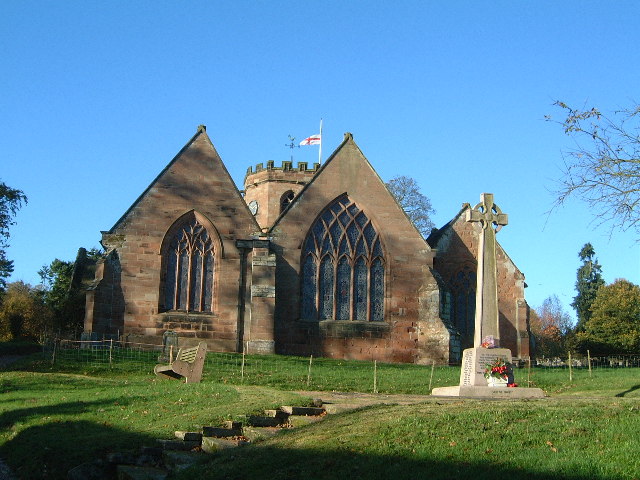
Upon his return to England, Heber prepared for Holy Orders at Oxford, where he continued his literary interests, engaged in university politics, and maintained an active social life. He was ordained as a deacon at the end of February 1807 and received full priest's orders from the Bishop of Oxford on 24 May 1807. Subsequently, he was inducted into the family living as rector of Hodnet, a role he later described as "a half-way station between a parson and a squire." Initially, he divided his time between his parish and Oxford, where he fulfilled duties at All Souls College. At this point, his own doctrinal position was still evolving; he admitted to Thornton that he was still searching for truth and prayed for guidance in his ministry. Although a High churchman by upbringing, Heber strongly opposed factional rivalries within the church. He eventually found his place around the midpoint of the Anglican spectrum, between the High Church and evangelical wings, with a slight inclination towards the evangelicals.
On 9 April 1809, Heber married Amelia Shipley, the youngest daughter of the Dean of St Asaph. He then withdrew from Oxford, having secured his M.A., and settled permanently in the Hodnet rectory. Finding the existing house too small for his wife's preferences, he had it demolished and a larger replacement built. In September 1813, Heber preached a sermon in Shrewsbury to the British and Foreign Bible Society, a missionary organization he had supported since his undergraduate days. This sermon concluded with what Derrick Hughes describes as Heber's first public declaration in support of overseas missions. He declined an appointment as a canon at Durham, preferring to continue his work in Hodnet. After 1814, he was assisted by his younger brother, the Revd Thomas Heber, who served as his curate until his death at the age of 31 in 1816. The employment of a curate allowed Heber more time for his literary pursuits and enabled him to accept an invitation in 1815 to deliver the Bampton Lectures at Oxford. He chose "The Personality and the Office of the Christian Comforter" as his subject, and the series was published in 1822.
In 1817, Heber accepted the post of canon at St Asaph. Its relative proximity allowed him to fulfill these additional duties without disrupting his parish work. His primary literary undertaking during these years was a biography and critical study of the complete works of the 17th-century cleric Jeremy Taylor. These works, accompanied by Heber's critique, were published in 15 volumes between 1820 and 1822. This period of Heber's life was marked by sorrow with the death of his infant daughter on 24 December 1818, after a brief illness. Two more daughters were born later, in 1821 and 1824, both of whom lived to adulthood. In 1822, Heber was elected to the church office of Preacher of Lincoln's Inn, a position that required regular residence in London. He viewed this as both an extension of his service to the Church and an opportunity to reconnect with old friends.
3.2. Hymn Writer
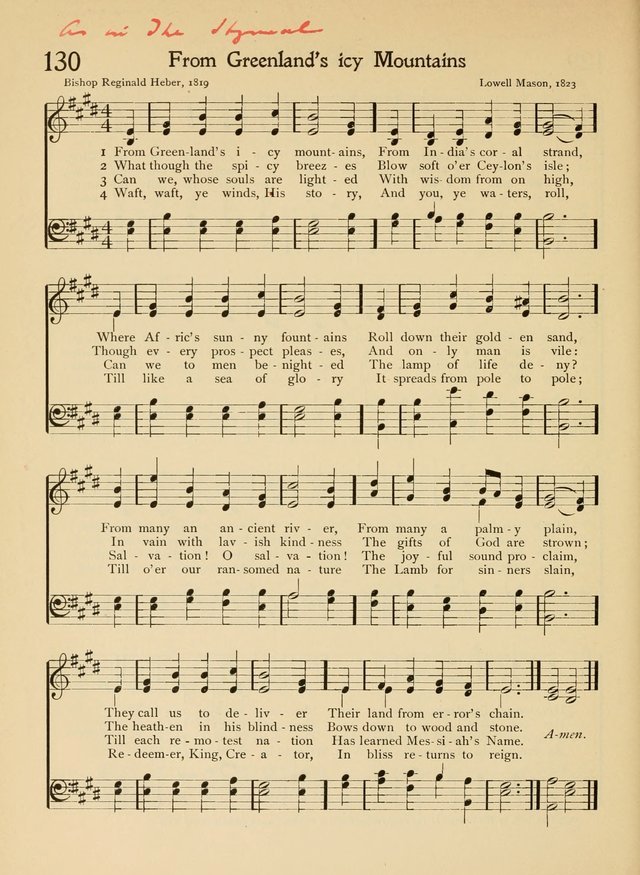
At the beginning of the 19th century, the Anglican Church officially discouraged the singing of hymns in churches, favoring metrical psalms, although informal hymn-singing was prevalent in many parishes. Reginald Heber, who admired the hymns of John Newton and William Cowper, became one of the first High Church Anglicans to compose his own hymns. In total, he wrote 57 hymns, primarily between 1811 and 1821. Heber intended to publish his hymns in a collection that would also include works by other writers. In October 1820, he sought assistance from the Bishop of London, William Howley, to obtain official recognition for his collection from the Archbishop of Canterbury. Howley's reply was noncommittal; he suggested Heber publish the hymns but withheld episcopal approval until public reaction could be assessed. Heber began preparing the publication but was unable to complete the arrangements before his departure for India in 1823. The collection was eventually published posthumously in 1827 as Hymns Written and Adapted to the Weekly Church Service of the Year.
The poet John Betjeman characterized Heber's style as consciously literary, marked by careful adjective choices and vivid figures of speech, emphasizing that "poetic imagery was as important as didactic truth." A more recent analysis by J. R. Watson noted Heber's tendency to deliver "a rather obvious sermon" and his blending of powerful description with "a rather trite moralism." Despite these critiques, a handful of Heber's hymns have remained popular into the 21st century, including "Brightest and Best" and "Holy, Holy, Holy! Lord God Almighty".
One hymn whose popularity has significantly declined is the missionary hymn "From Greenland's Icy Mountains." Written in 1819 as part of a nationwide campaign for the Society for the Propagation of the Gospel (SPG), Watson describes it as "a conspicuous example of that fervent belief to convert the world to Christianity which led Heber and others to lay down their lives in the mission field." Although widely sung until the mid-20th century, it was notably omitted from the 1982 revision of the Episcopal Church hymnal. Betjeman felt that in the modern world, the hymn's lyrics, with phrases like "...every prospect pleases and only man is vile" and "the heathen in his blindness [bowing] down to wood and stone," appear patronizing and insensitive to other beliefs. These phrases and the assumptions behind them offended Gandhi, who highlighted them in a speech at YMCA Calcutta (Kolkata) in 1925, stating: "My own experience in my travels throughout India has been to the contrary... [Man] is not vile. He is as much a seeker after truth as you and I are, possibly more so." Despite this specific controversy, the Dictionary of North American Hymnology notes that most of Heber's hymns continue to be used. He is considered one of the five great British hymn writers, alongside Isaac Watts, Charles Wesley, James Montgomery, and Horatius Bonar.
3.3. Literary and Scholarly Works
Beyond his hymns, Reginald Heber made significant contributions to literature and scholarship. His most extensive literary undertaking during his Hodnet years was a biography and critical study of the complete works of the 17th-century cleric Jeremy Taylor. This monumental work, comprising 15 volumes, was published between 1820 and 1822. In 1815, Heber delivered the prestigious Bampton Lectures at Oxford, choosing "The Personality and the Office of the Christian Comforter" as his subject, which was subsequently published in 1822.
After his death, Heber's journal from his tour of northern India in 1824-25 was published in 1828 and achieved considerable commercial success. However, a three-volume biography and collection of letters published by his widow, Amelia, in 1830, proved less popular. Various collections of Heber's poetry also appeared in the ensuing years. While some of his lighter verses were described as neat and amusing, biographer Derrick Hughes observed that the general quality of his poetry was such that if Heber had been solely a poet, he would likely have been quickly forgotten. His lasting literary impact primarily stemmed from his work as a hymn-writer.
4. Bishop of Calcutta
Reginald Heber's appointment as Bishop of Calcutta marked a pivotal turn in his life, leading him to a vast and challenging ministry in British India, characterized by extensive travel and dedicated efforts to improve the Anglican Church's presence and impact.
4.1. Appointment and Preparation
The see of Calcutta was established in 1814, encompassing a vast territory that included much of the Indian subcontinent, Ceylon, Australia, and parts of southern Africa. The first bishop, Thomas Fanshawe Middleton, consecrated in 1814, died in office in July 1822. At the time, the head of the Indian Board of Control was Charles Williams-Wynn, an old friend of Heber's from Oxford. In December 1822, Williams-Wynn wrote to Heber, subtly offering him the position while seemingly anticipating a refusal, yet leaving the door open for Heber to accept.
Heber, who had a long-standing interest in overseas missions and supported organizations like the SPG, the Church Missionary Society (CMS), and the British and Foreign Bible Society (BFBS), was drawn to the post. His early travels had stimulated his interest in distant lands. However, his initial response to the implied offer was cautious. He first inquired if a suitable local candidate existed, and was informed there was none. His next concerns revolved around exposing his wife and infant daughter to the rigors of the Indian climate and whether his own health was adequate for the demands of the role. After consulting with doctors and discussing with his family, Heber initially declined the post in a letter to Williams-Wynn on 2 January 1823. Within days, however, he wrote again, regretting his refusal and asking if the position was still available. Williams-Wynn promptly secured the formal approval of King George IV for Heber's appointment.
Heber spent the subsequent months at Hodnet preparing for his departure. During this period, he delivered a farewell sermon at Oxford, after which he was conferred the degree of Doctor of Divinity (D.D.). On 1 June 1823, Reginald Heber was formally consecrated as Bishop of Calcutta at Lambeth Palace by the Archbishop of Canterbury. Two weeks later, he departed for India with his wife Amelia and daughter Emily.
4.2. Ministry in India
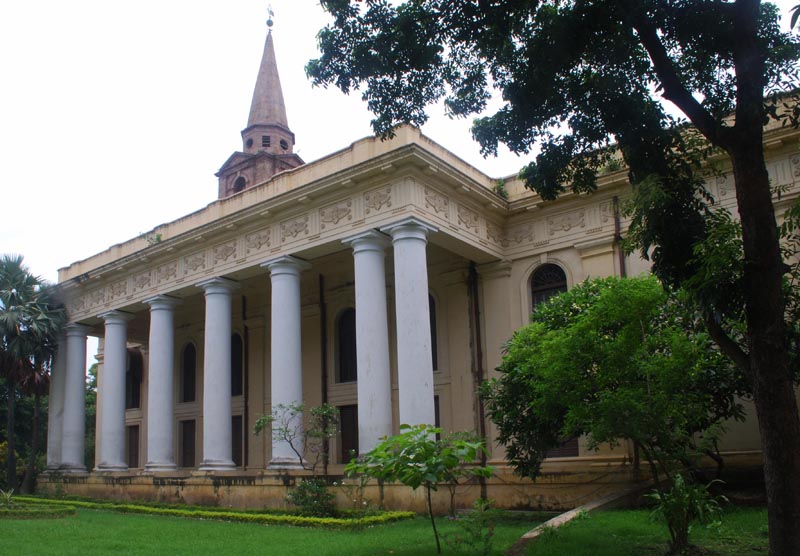
The new bishop arrived in Calcutta on 10 October 1823. Following his ceremonial installation by the Governor General, Lord Amherst, Heber preached his inaugural sermon as bishop on Sunday, 12 October, at St John's Cathedral Church. He faced numerous challenges, including tasks left unfinished after his predecessor's death and the long period without a bishop. A significant concern was Bishop's College, a training school for local clergy founded by Middleton in 1820, whose development had stalled due to financial and management issues. Heber revitalized the project through extensive fundraising, by convincing the government to increase its land grant, and by restarting the building program. Within a few months, the college boasted a library and a new chapel. In June 1824, utilizing a power granted to him by a recent Act of Parliament, Heber ordained the first native Indian to receive Holy Orders as a deacon.
Heber demonstrated a keen interest in all aspects of Indian life and quickly forged friendships with both the local population and representatives of non-Anglican churches. Occasionally, his easygoing manner and generous hospitality clashed with the more puritanical and evangelical members of his clergy. One such instance involved Isaac Wilson of the CMS, who used a sermon to directly criticize the bishop after what he considered excessive celebrations following a baptismal service. Wilson was compelled to apologize after Heber threatened him with a Consistory court.
4.3. Travels in India
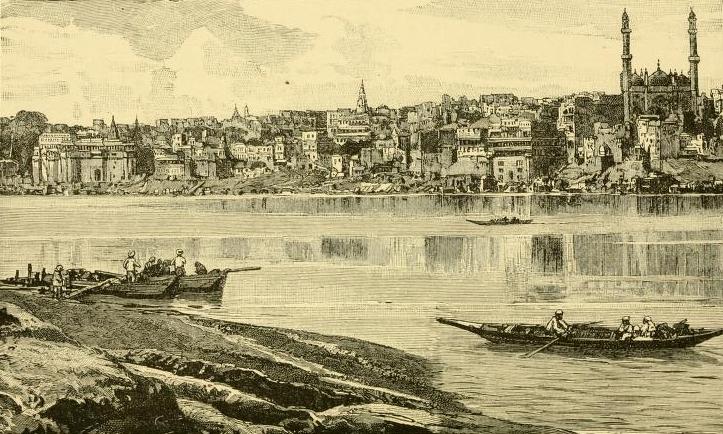
On 15 June 1824, Heber embarked on an extensive tour of northern India, accompanied by his personal chaplain, Martin Stowe, and Daniel Corrie, the Archdeacon of Calcutta. Amelia remained in Calcutta, having given birth to their third daughter, Harriet, earlier that year. The general itinerary involved traveling by boat to the upper reaches of the Ganges River, then overland into the foothills of the Himalayas, before turning south and west to cross Rajputana and reach Bombay. The journey nearly ended prematurely when Stowe fell ill in Dacca (present-day Dhaka, Bangladesh) and died there. After some hesitation, Heber decided to continue the tour.
In early August, the party reached Benares (now Varanasi), the largest city in the Ganges plain, where Heber spent several weeks. Benares was a wholly Indian city without a significant European population, sacred to Hindus, Sikhs, and Buddhists, yet it also had a well-established CMS school and a substantial Christian minority. Heber consecrated a new church there, and during a Holy Communion service conducted in both English and Hindustani, a large congregation of Christians and Hindus filled the church.
The party departed Benares in mid-September. After reaching Allahabad, they continued overland, escorted by an armed troop of sepoys. On 28 November, they reached their northernmost point at Almora in the Kumaon region. Their subsequent path southward led them to Delhi, the ancient Mughal capital, where Heber was presented to the aging emperor Akbar Shah II in his dilapidated palace. Heber described the emperor as "the venerable ruin of a mighty stock." In the final stages of the journey to Bombay, at Nadiad, Heber met with Sahajanand Swami, the region's leading Hindu religious leader. Heber had hoped to convert the Swami to Christianity but was disappointed as he failed to do so during their meeting. On 19 April, Heber arrived in Bombay and was greeted a week later by Amelia and his daughters, who had arrived by sea from Calcutta.
Heber remained in Bombay for four months. Instead of sailing directly back to Calcutta, he decided to visit Ceylon (Sri Lanka) on the way. He arrived at Galle on 25 August and spent five weeks touring the main cities before departing for Calcutta, where he arrived on 19 October 1825, after an absence of 16 months.
4.4. Final Months and Death
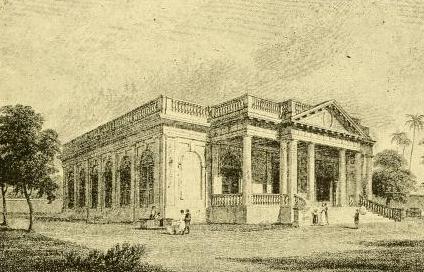
Upon his return to Calcutta, Heber dedicated himself to preparing a series of detailed reports for the Governor General, Lord Amherst, summarizing his observations from his extensive voyage. He also wrote to Williams-Wynn in London, expressing strong criticism of the East India Company's administration of its Indian territories. He was particularly concerned that few Indians were promoted to senior posts and noted the "bullying, insolent manner" prevalent among the Company authorities towards the local population.
Numerous local matters also demanded Heber's attention, including the next phase of development for Bishop's College, the preparation of a Hindustani dictionary, and a series of ordinations. Among these was the ordination of Abdul Masih, an elderly Lutheran whose reception into Anglican orders had previously been resisted by Bishop Middleton on unspecified grounds.
Despite the pressures on his time, Heber embarked on another tour on 30 January 1826, this time heading south to Madras, Pondicherry, Tanjore, and ultimately Travancore. One of the reasons for this tour was to examine the persistent issue of caste in Southern India. In Tanjore, on Easter Day, 26 March 1826, Heber preached to more than 1300 people, and the following day, he conducted a confirmation service for a large Tamil congregation. On 1 April, he moved on to Trichinopoly, where, the next day, he confirmed 42 individuals. On 3 April, after attending an early-morning service at which he gave a blessing in the Tamil language, Heber returned to his bungalow for a cold bath. Immediately after plunging into the water, he died, possibly from the shock of the cold water in the intense heat. J. R. Watson notes that a contemporary engraving depicts his body "being carried from the bath by his servant and chaplain, the latter immaculately attired in a frock coat and top hat." His funeral was held the next day at St John's church, where he had preached his final sermon, and he was buried within the church, on the north side of the altar.
5. Personal Life
Reginald Heber's personal life was intertwined with his public duties. On 9 April 1809, he married Amelia Shipley, the youngest daughter of the Dean of St Asaph. The couple settled in Hodnet, where Heber had a larger rectory built to accommodate his wife's preferences. Their family life was marked by both joy and sorrow; an infant daughter died on 24 December 1818 after a short illness. However, two more daughters were born later, in 1821 and 1824, both of whom lived to adulthood.
After Heber's death in 1826, his widow Amelia married Count Demetrius Valsamachi in July 1830. Valsamachi, a Greek diplomat, later became a British subject and was knighted by Queen Victoria. Amelia lived until 1870. Of Heber's daughters, Emily married Algernon Percy, the son of the Bishop of Carlisle, and his younger daughter Harriet married a son of Heber's friend John Thornton.
6. Legacy and Assessment
Reginald Heber's brief but impactful episcopate, coupled with his literary and hymn-writing endeavors, left a lasting legacy on church music, literature, and the Anglican Church, despite facing some criticism.
6.1. Memorials and Commemorations
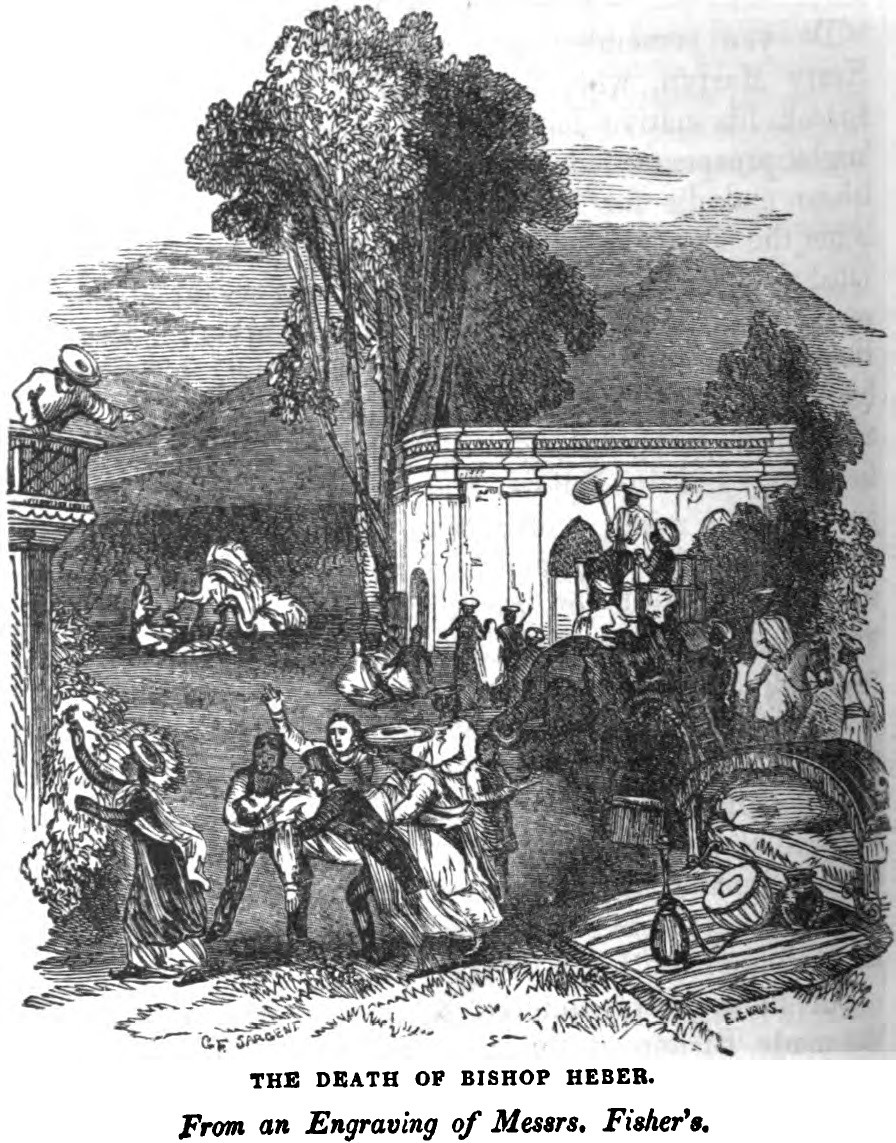
Although Reginald Heber's episcopate in India was short, he made a considerable impression, and news of his death elicited numerous tributes from across India. Sir Charles Grey, an old Oxford friend who served as Calcutta's Chief Justice, praised Heber's cheerfulness, humility, good humor, patience, and kindness. Flags were flown at half-mast in Madras and Calcutta, and the Governor-General ordered a salute of 42 guns, one for each completed year of the bishop's life. Public subscriptions were initiated in several cities to raise funds for monuments. In St John's church in Trichinopoly, a simple plaque initially marked Heber's grave, which was later made much more elaborate. In St George's church, Madras, a large sculpture by Francis Chantrey was erected, depicting Heber ministering to his flock. Reflecting Heber's commitment to training local ordinands, further funds were raised to provide Heber scholarships at Bishop's College. In Trichinopoly, a school founded by the German missionary Christian Friedrich Schwarz was renamed the Heber Memorial School.
It took four months for reports of Heber's death to reach England. In Oxford, representatives from Brasenose and All Souls Colleges opened a fund for a suitable memorial. This initiative was later taken over by Williams-Wynn, who sought a national rather than an Oxford-centric monument. From the substantial sum collected, Chantrey was paid 3.00 K GBP for a large marble sculpture that was placed in St Paul's Cathedral, London. More modest memorials were also erected in the parish churches at Hodnet and Malpas. During Heber's episcopacy, Australia was part of the Diocese of Calcutta, and following his death, a schoolhouse named the Heber Chapel was built at St Paul's, Cobbitty, New South Wales. Heber had also formed a close friendship with the poet Felicia Hemans during his time in St Asaph, and in 1826, she published a poetic tribute titled "To the Memory of Bishop Heber" in The Asiatic Journal. Another tribute was provided by Letitia Elizabeth Landon with her poetical illustration to an engraving of a painting by H. Melville on the Death of Heber in Fisher's Drawing Room Scrap Book, 1839.
6.2. Hymns and Literary Impact
Heber was quickly commemorated in print following his death. His collection of hymns was published in 1827, and the journal he had kept during his northern India tour of 1824-25 was published in 1828, achieving significant commercial success. However, the three-volume biography and collection of letters published by his widow, Amelia, in 1830, was less popular. Various collections of Heber's poetry also appeared in the ensuing years. Derrick Hughes observed that while some of his lighter verses were neat and amusing, the overall quality was such that if Heber had been only a poet, he would likely have been quickly forgotten.
Heber secured a more enduring legacy as a hymn-writer. According to Hughes, among his hymns with lasting appeal are the Epiphany hymn "Brightest and best of the sons of the morning"; "The Son of God Goes Forth to War", dedicated to the church's saints and martyrs; and the Trinity Sunday hymn "Holy, Holy, Holy, Lord God Almighty". The latter is arguably the most widely known of all Trinity hymns, owing much of its popularity to John Bacchus Dykes's tune "Nicea," which J. R. Watson notes for its "magnificent grandeur [that] carries the long lines effortlessly." Hughes also highlighted "God that madest earth and heaven" and "By cool Siloam's shady rill" as two more Heber hymns deserving greater recognition. Heber is considered one of the five great British hymn writers.
Heber's pioneering commitment to the mission fields was eloquently expressed by the author Charlotte Mary Yonge half a century after his death: "Heber was one of the first English churchmen who perceived that to enlarge her borders and strengthen her stakes was the bounden duty of the living Church." She noted that he led by example and through his writings, which "did much to spread knowledge of, and therefore interest in, the field of labour in which he died." The Anglican Church of Canada commemorates Heber annually on 4 April.
6.3. Criticism and Controversy
Despite his significant contributions, Reginald Heber's work, particularly his missionary hymn "From Greenland's Icy Mountains," has faced criticism, especially concerning its colonial context and perceived insensitivities. The hymn, written in 1819, includes phrases such as "...every prospect pleases and only man is vile" and "the heathen in his blindness [bowing] down to wood and stone." These lyrics have been widely regarded as patronizing and insensitive to other beliefs and cultures.
One notable critic was Mohandas Karamchand Gandhi, who, in a speech at the YMCA in Calcutta (Kolkata) in 1925, specifically challenged these lines. Gandhi stated, "My own experience in my travels throughout India has been to the contrary... [Man] is not vile. He is as much a seeker after truth as you and I are, possibly more so." This criticism highlights the hymn's problematic assumptions about non-Christian populations and their spiritual lives. As a result of such critiques and evolving societal perspectives, "From Greenland's Icy Mountains" has seen a decline in popularity and was notably omitted from the 1982 revision of the Episcopal Church hymnal.
7. Coat of Arms
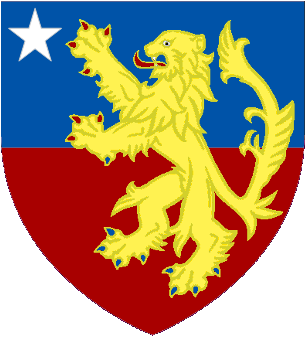
Reginald Heber's heraldic achievement is described as: Per fess Azure and Gules a lion rampant Or in the dexter chief point a mullet Argent. This blazon indicates a shield divided horizontally into two halves: the upper half is blue (Azure), and the lower half is red (Gules). A golden (Or) lion rampant (standing on its hind legs) is depicted across both halves. In the upper right (dexter chief) corner of the shield, there is a silver (Argent) mullet, which is a five-pointed star. This coat of arms reflects the long-standing heritage of the Heber family, who were granted their arms during the reign of Queen Elizabeth I.